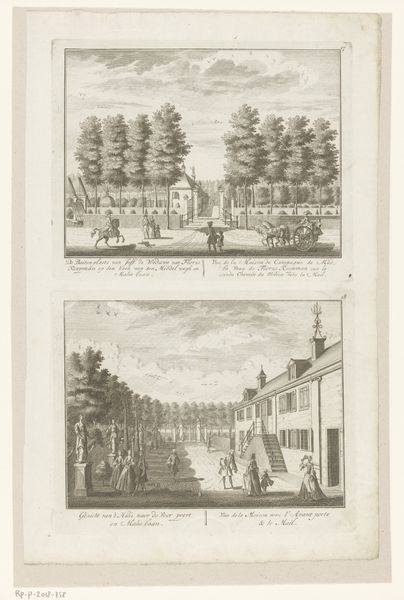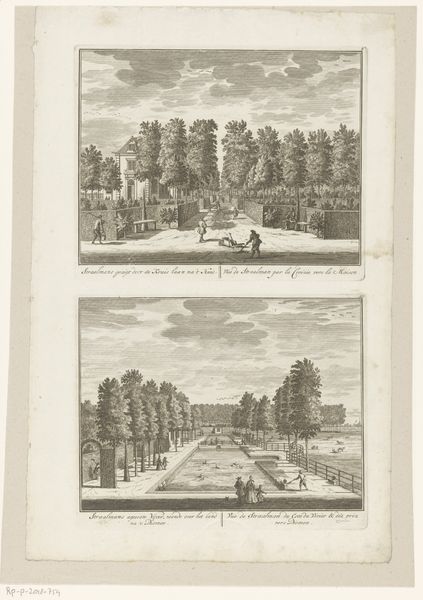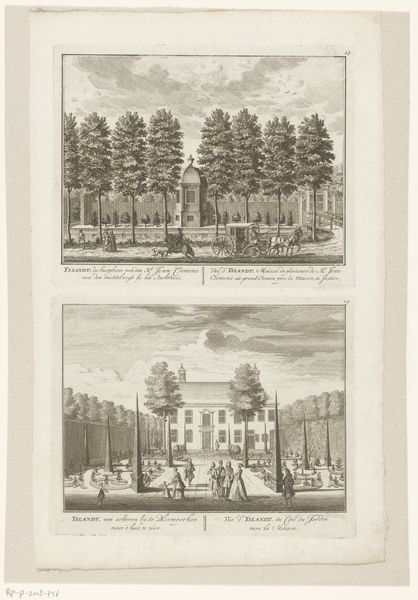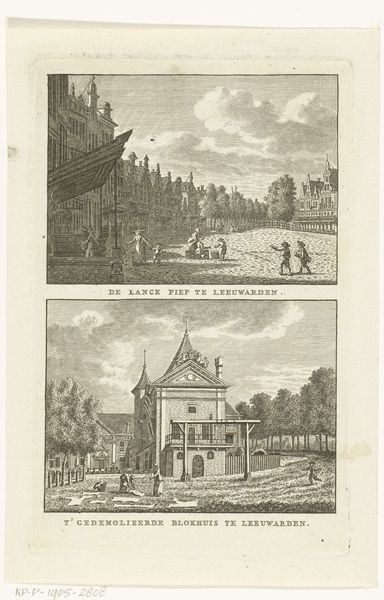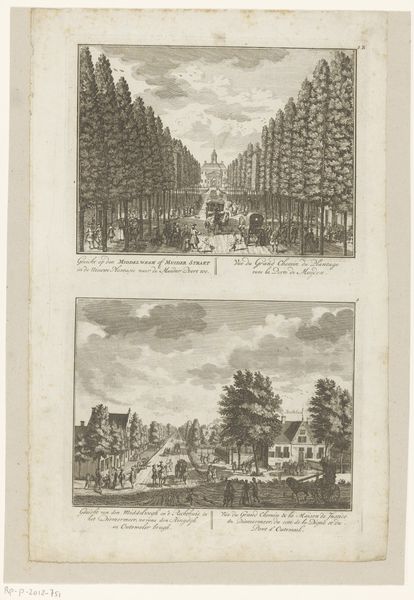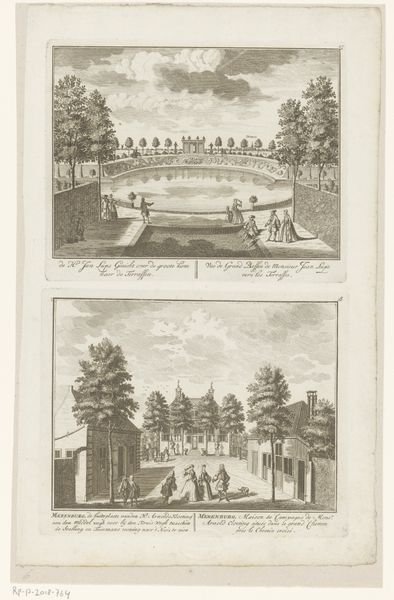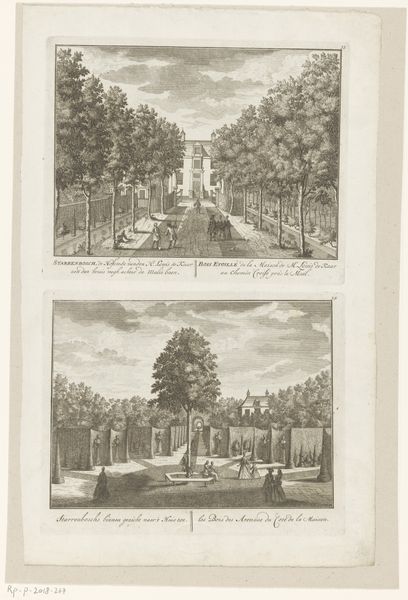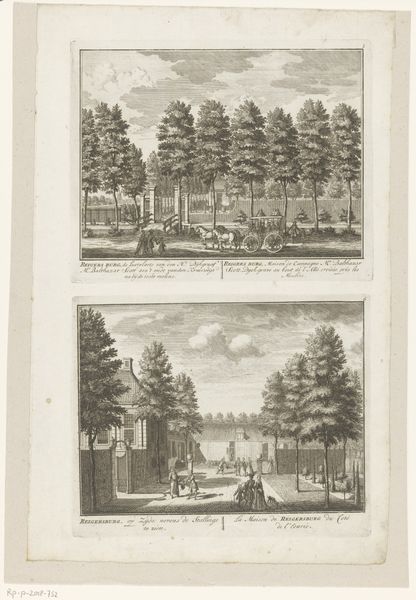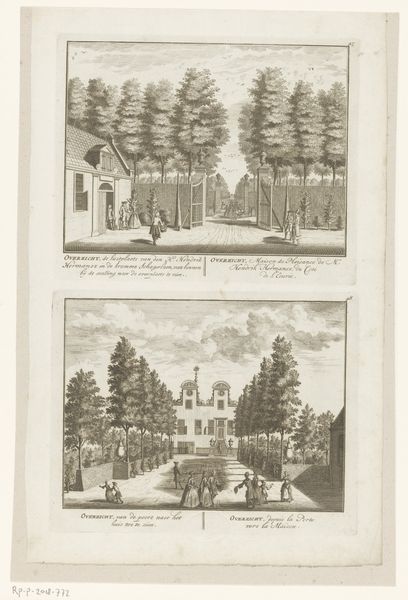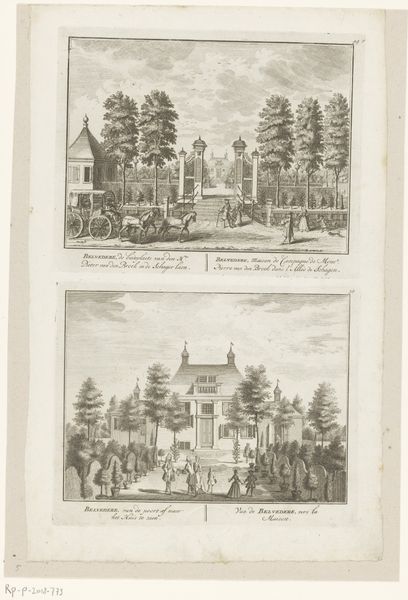
Gezicht op het kruispunt van de Midden- en Kruisweg bij buitenplaats Pauw en Hage en gezicht op buitenplaats Pauw en Hage 1725 - 1768
0:00
0:00
anonymous
Rijksmuseum
print, engraving
#
dutch-golden-age
# print
#
old engraving style
#
landscape
#
cityscape
#
genre-painting
#
engraving
Dimensions: height 170 mm, width 213 mm, height 172 mm, width 214 mm
Copyright: Rijks Museum: Open Domain
Editor: This print, titled "Gezicht op het kruispunt van de Midden- en Kruisweg bij buitenplaats Pauw en Hage en gezicht op buitenplaats Pauw en Hage", is an engraving made sometime between 1725 and 1768 by an anonymous artist. It depicts two different scenes from what appears to be an estate. I am struck by the contrast between the openness of the top image and the almost performative nature of the garden scene below. What can you tell me about this piece? Curator: This print offers us a glimpse into the Dutch Golden Age's fascination with portraying wealth and social order. While seemingly just landscapes, they represent a deliberate construction of power. The manicured gardens weren't just aesthetic; they symbolized control over nature, a visual statement of dominance reflecting colonial attitudes. Editor: Colonial attitudes? How so? Curator: The leisure and wealth displayed in these scenes were often built on the backs of exploited labor and resources extracted from colonized lands. These gardens, these estates, were only possible through those power imbalances. The very act of meticulously ordering nature, shaping it to one's will, mirrors the colonial project of imposing control over foreign lands and populations. What do you notice about the people in the bottom scene? Editor: They seem to be posing, almost like actors on a stage. Curator: Exactly! The composition highlights a social performance, a carefully orchestrated display of status. It is not just a depiction of a garden, but also a depiction of how the elite wished to be seen. It is an active claim to their elevated place in society, solidified by economic dominance. Editor: That's fascinating! I hadn’t considered how the landscapes themselves could be forms of asserting power. Curator: Thinking about art in relation to its historical context – social structures, economic realities, power dynamics – reveals a whole new layer of meaning. These images are beautiful, but also complicit in perpetuating a specific worldview. Editor: Thank you, that gives me a lot to consider about the relationship between art, power, and historical context!
Comments
No comments
Be the first to comment and join the conversation on the ultimate creative platform.

